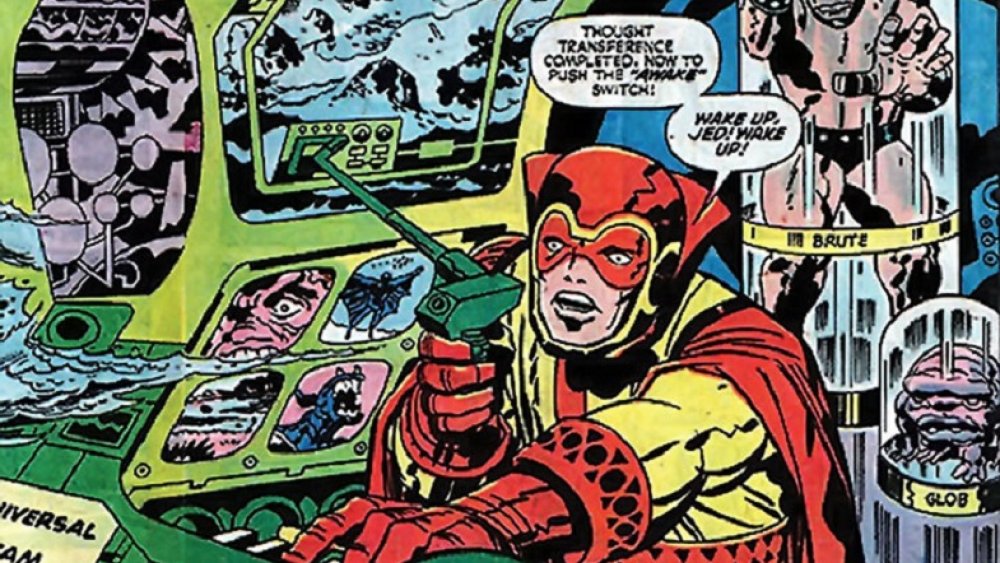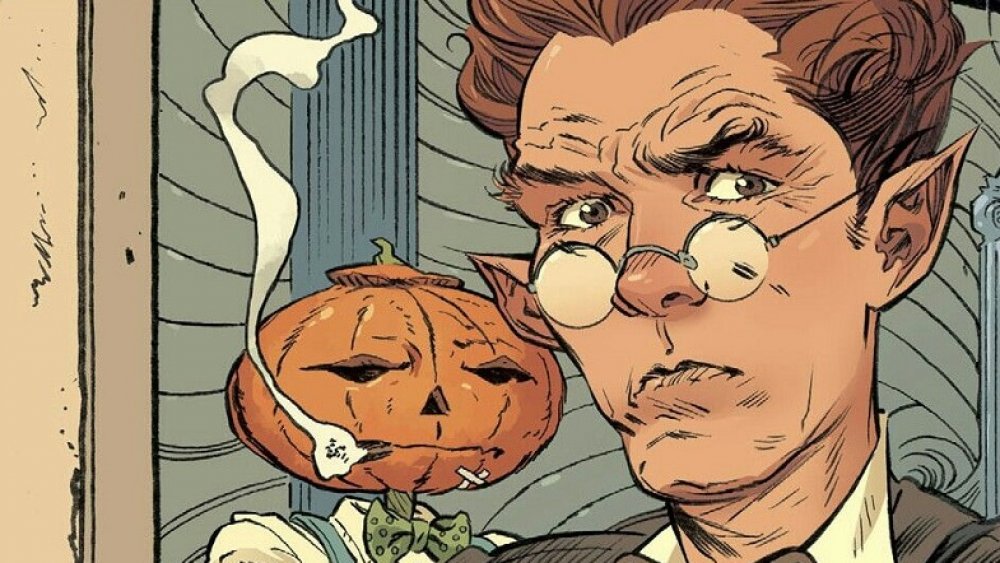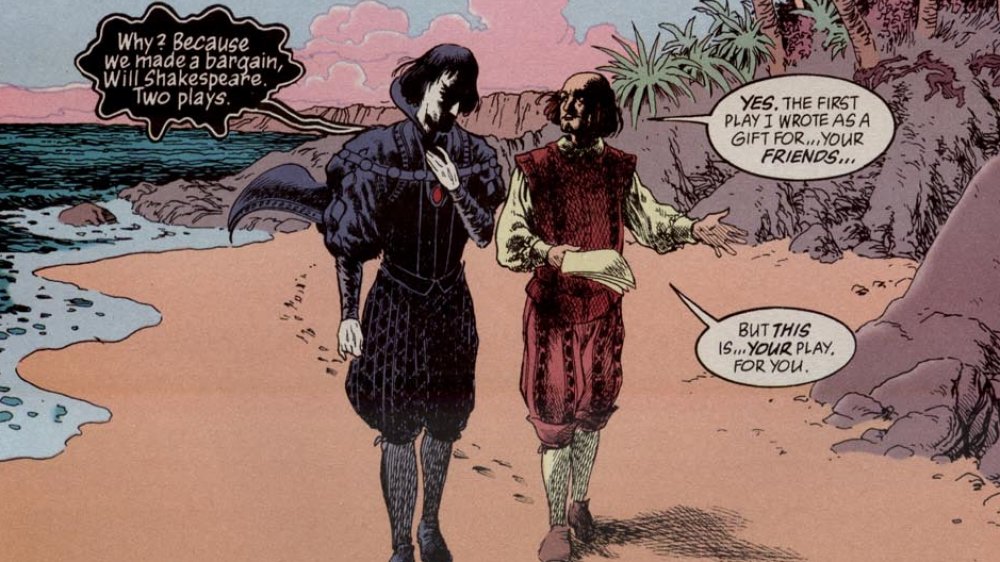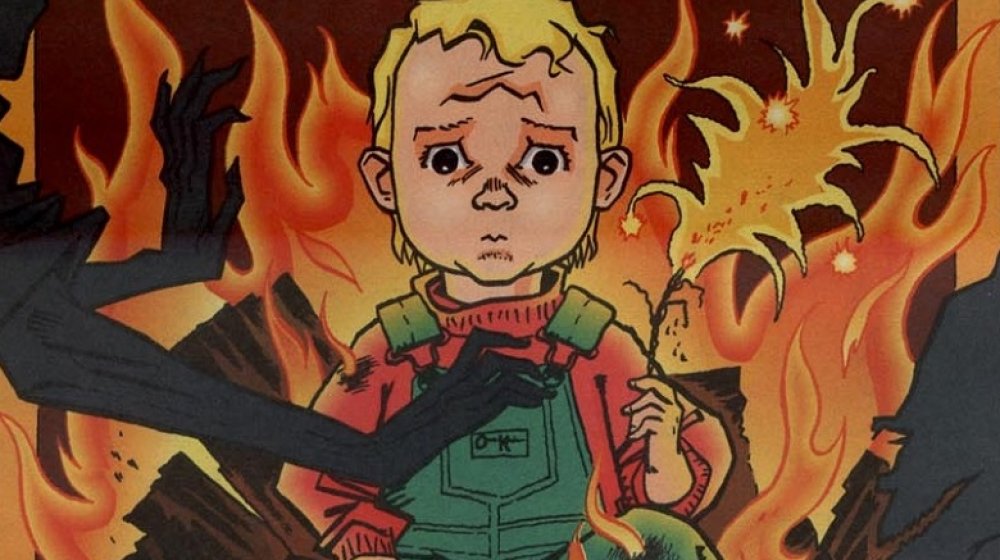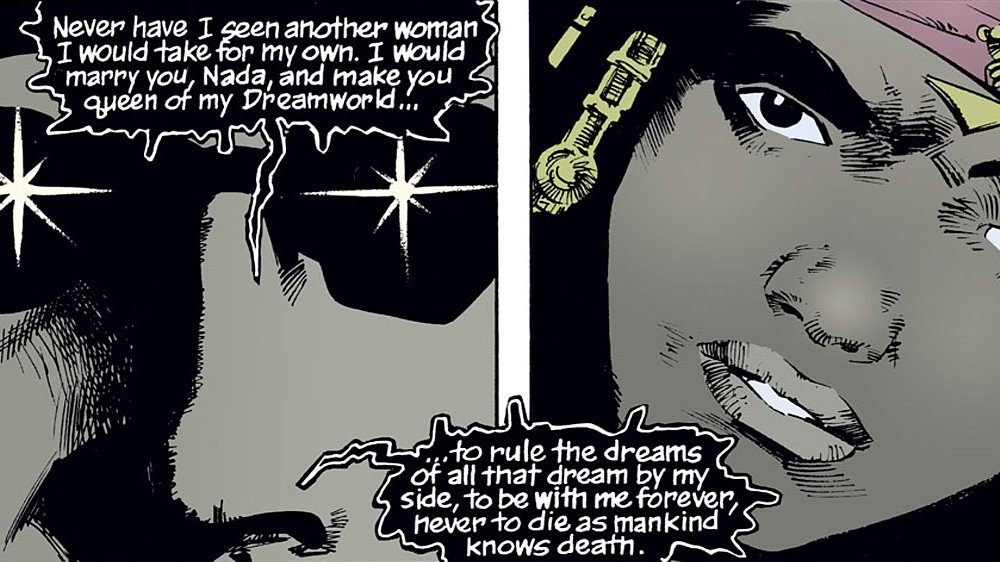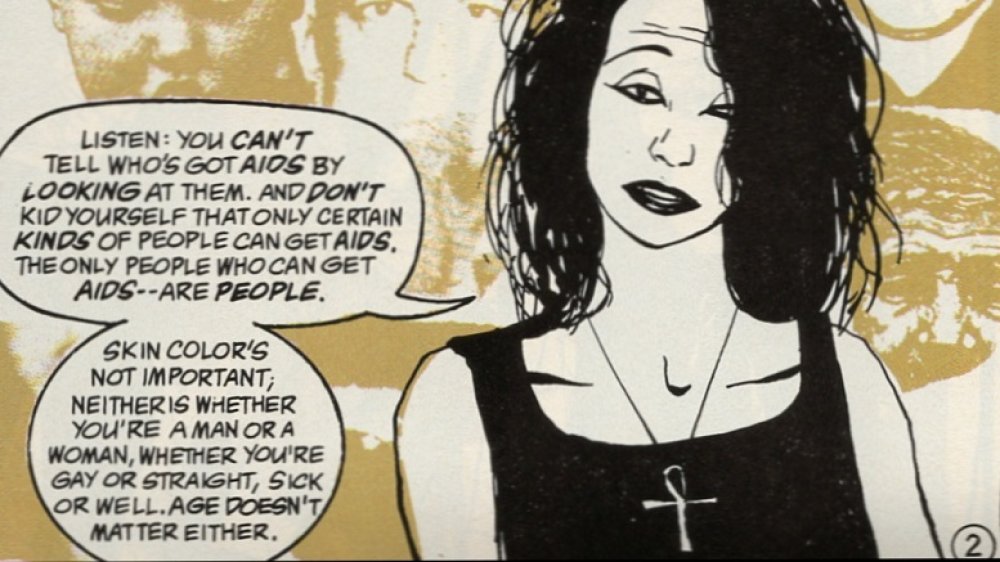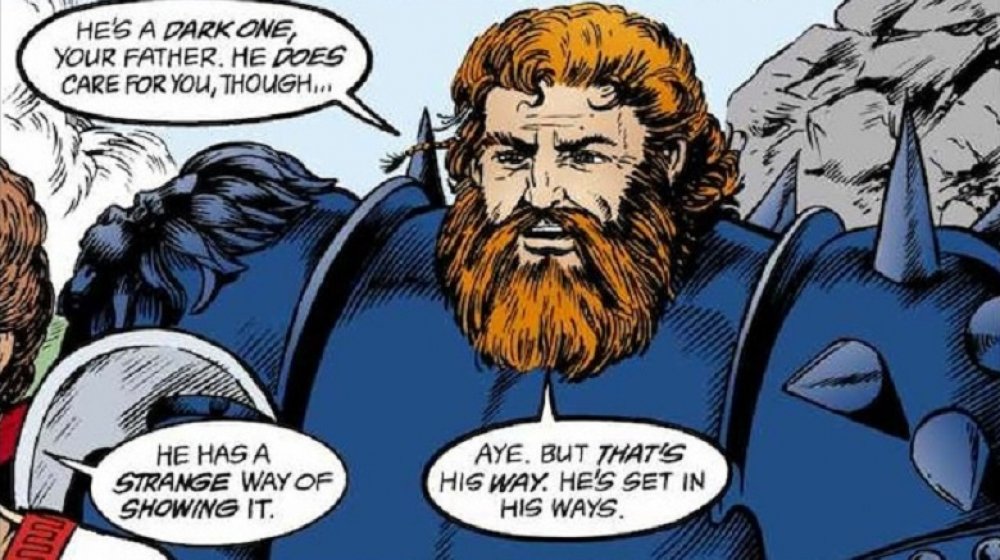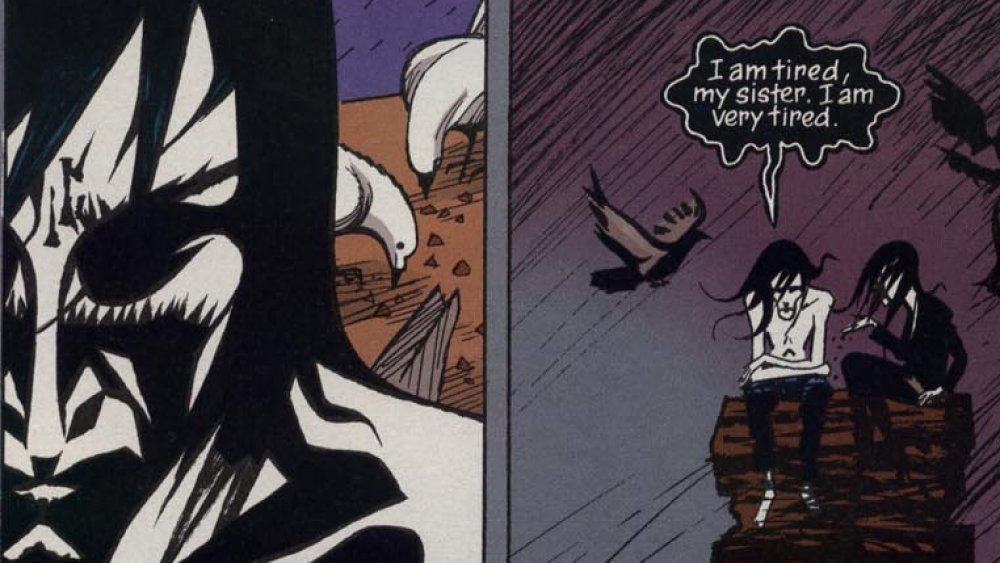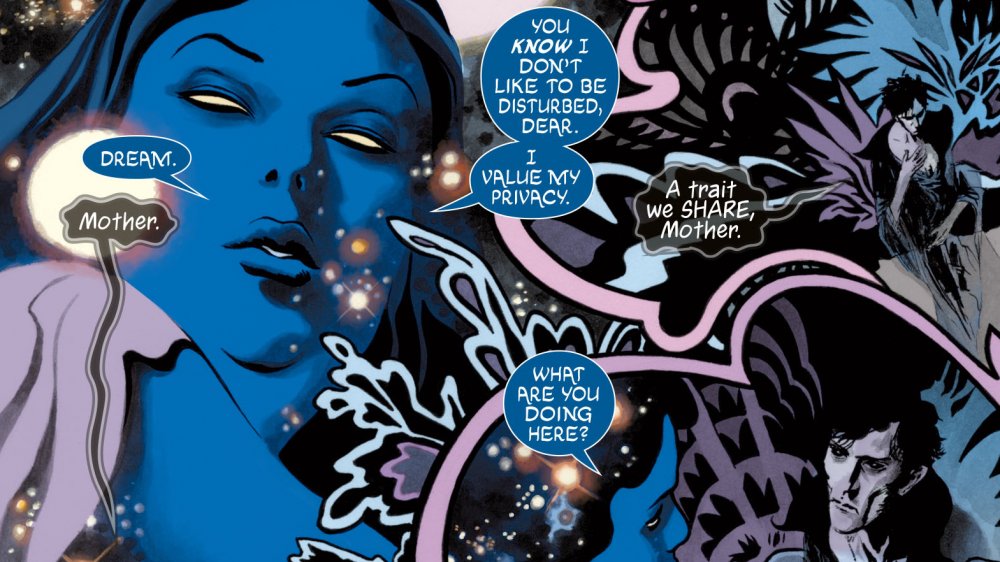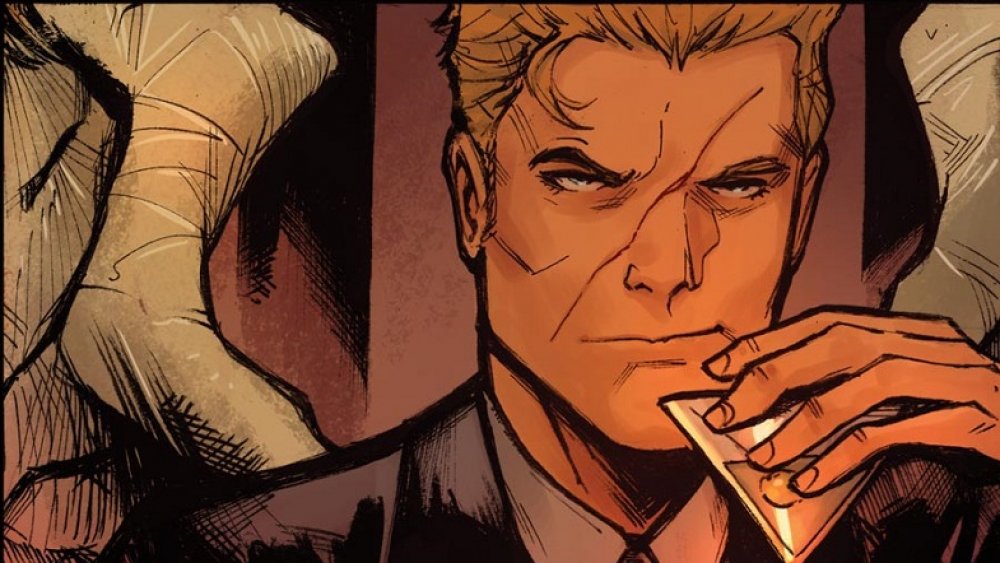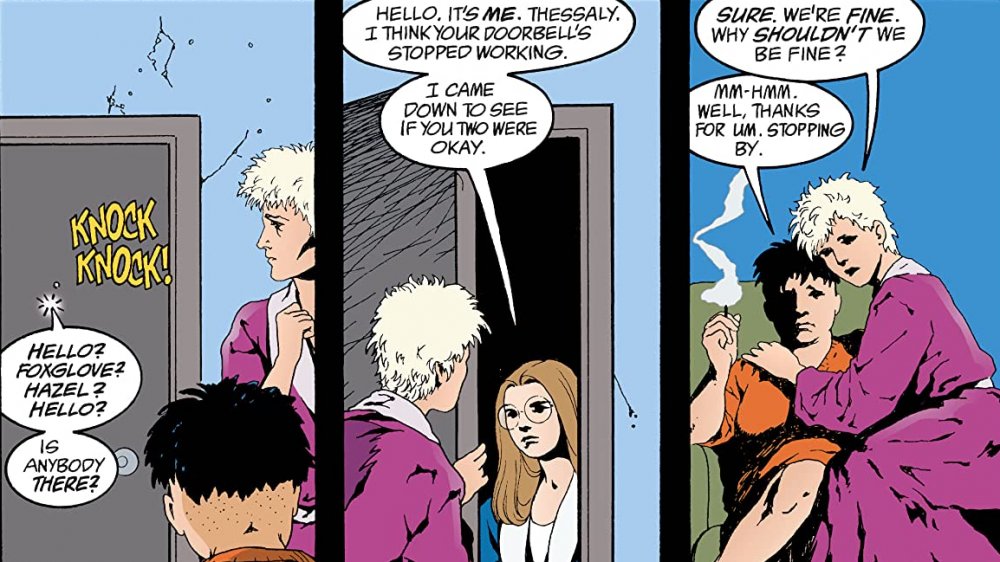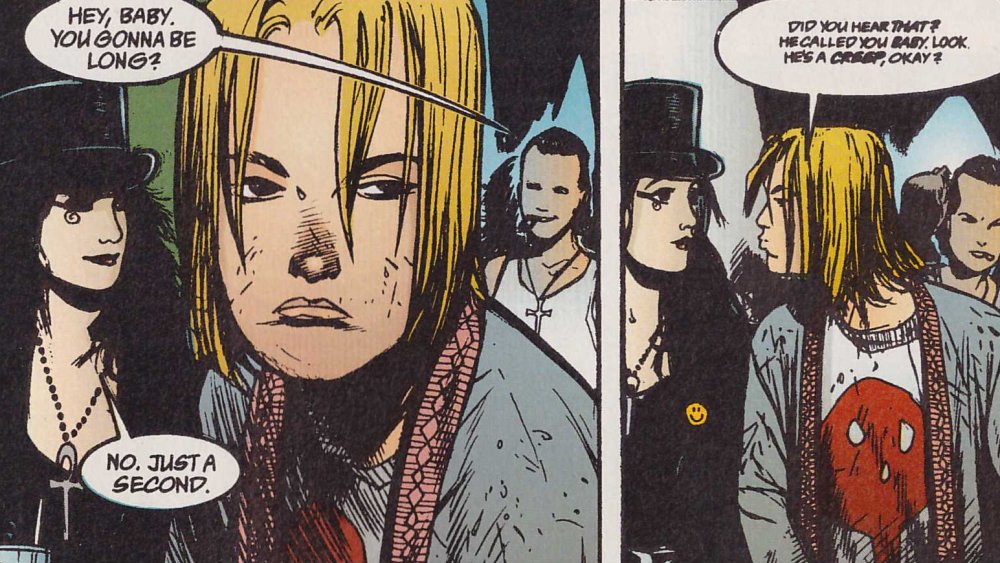DC's Sandman Explained
Debuting in 1989, The Sandman was a groundbreaking success for DC Comics. It follows the long, strange life of Dream, the manifestation of dreams, storytelling, and all that dwells in the imagination. The series' brooding hero, fantastical realms, and complex storytelling brought a new audience to comics and made Neil Gaiman into something of a geek rockstar. Comics were left forever changed in Sandman's wake: The series' success was an impetus for the creation of the Vertigo imprint, which ended up publishing such classics as Transmetropolitan, Preacher, and a whole host of other titles that helped the medium, in the words of pioneering editor Karen Berger, "grow up." Sandman remains a seminal series to this day, beloved of readers born years after its final issue hit the stands in 1996. Dream's world, rife with kind-hearted monsters, ancient evils traipsing about the modern world, and the squabbles of siblings who serve as the personification of forces like desire and despair, is one you can't help but fall into.
After years of failed attempts to bring the beloved comic to the big or small screen, a successful Sandman adaptation is finally becoming a reality: The series is being adapted into a Netflix series, with Neil Gaiman, David S. Goyer, and Allan Heinberg at the helm. We're here to give you the inside scoop on Sandman before that series makes its debut, from its superheroic roots to the outer edges of the Dreaming.
Sandmen
While Dream is very much an original creation on Gaiman's part, "The Sandman" is a moniker that has been used by multiple DC heroes. The first is Wesley Dodds, the Golden Age Sandman. He wears a gas mask and uses a sleeping gas against his opponents. Dodds actually appears in Gaiman's Sandman, his vigilante heroism explained as a reaction to Dream's imprisonment on Earth. Sandman's success prompted the creation of Sandman Mystery Theatre, a noir take on Dodds published by Vertigo from 1993 to 1999.
The next Sandman is Hector Hall, created by Joe Simon and Jack Kirby. Despite his garish costume, he is actually closest in nature to Dream, as he is an immortal being who inhabits the Dream Dimension alongside Brute and Glob, a pair of cantankerous nightmares. This version of the character also plays a role in Sandman, and a major one at that: Brute and Glob are revealed to be Dream's creations, escaped during their master's absence. It is revealed that they and Hector live in the head of a boy named Jed, alongside Lyta, Hector's wife. Moreover, their Dream Dimension is but a splinter of the Dreaming, the plane of imagination which Dream oversees and acts as manifestation of. Upon Dream's return, Brute and Glob are punished, Hector is sent on, into the afterlife, but Lyta, who is pregnant, is returned to the human world. Her son Daniel, conceived in dreams, goes on to become the next incarnation of Dream.
A legacy of mysteries and secrets
The Dreaming might be the primal plane of imagination, but its also a place unto itself. Consider Dream's castle, which is staffed by a wide variety of colorful characters. Funnily enough, many of these unique figures were originally part of DC's horror comics of the 1960s and 1970s.
Take Cain and Abel. This particular incarnation of the biblical siblings first served as the hosts of the House of Mysteries and House of Secrets series Their mother, Eve, served as host for Secrets Of Sinister House. In the Dreaming, Cain and Abel play out an endless cycle of violence in which Cain — surprise, surprise — murders Abel, Abel returns to life, and the whole process repeats itself. Eve, in contrast, lives a largely solitary life, accompanied only by her flock of ravens. One of them, Matthew Cable, has his roots in Alan Moore's legendary run of Swamp Thing. Though he dies a tragic death in that series, Sandman sees him reborn in the Dreaming as a particularly irreverent talking raven.
It's not just biblically-rooted horror hosts that end up in the Dreaming, however. Lucien, the overseer of Dream's library and caretaker of his castle, was also the host of another DC horror book, Tales Of Ghost Castle. Even Dream's brother Destiny first appeared in a DC horror comic: Weird Mystery Tales, which also introduced his Book of Souls.
Tell me a story
The storytelling in Sandman is as meta as it gets: It's a story about the prince of stories, often told through unique, real world storytellers. The most prominent is William Shakespeare, who Dream meets in a pub and promises a lifetime of inspiration to, in return for two plays. The first is A Midsummer Night's Dream, which is performed for Dream and an actual assemblage of faeries in an issue that won a World Fantasy Award for Best Short Story. Titania, Auberon, and their court are amused to see themselves represented by humans ... to the point that Titania spirits Hamnet, Shakespeare's son, away to her realm forever.
The second play Shakespeare writes is The Tempest. The tale of Prospero, deposed Duke of Milan, is implied to be about Shakespeare retiring from his own vocation, and, most importantly, a nod towards Dream contemplating his own departure. Appropriately enough, this second play is explored and delivered in "The Tempest," the final issue of the series.
Unsolved mysteries
As Sandman winds on, it establishes a number of mysteries. Some of these are resolved over the course of the series, while some aren't. Still others end up at a halfway point, where certain details are made explicit and others aren't. So it goes in a story about stories.
The central mysteries of Sandman have to do with the Endless themselves. The first is introduced in the very first arc of the series, which sees Dream kidnapped by humans who take advantage of his exhausted state. What exhausted him? This is not answered until the Sandman: Overture miniseries: Dream had been busy saving the entire universe. Then there is the absence of a member of the Endless who is only vaguely alluded to until the "Brief Lives" arc. The defected sibling is Destruction, who is much missed by Delirium. She herself is another mystery, as she was once Delight. How she transformed is a question left largely unanswered.
Other mysteries have more to do with the events of the story itself. For example, Daniel Hall, Lyta and Hector's child conceived in the Dreaming, is kidnapped towards the climax of the story by Loki and Puck. It's never revealed who hired them to do so ... though it is implied to be Dream himself, organizing his own demise.
King of dreams, terrible boyfriend
Dream might be one of the Endless, but that doesn't mean he can't fall in love with humans. He is, however, a terrible boyfriend, many times over.
One of his first loves is Killala of the Glow, an ancient ancestor of the beings who would become the first Green Lanterns. She is manipulated by Desire into falling in love with a star called Sto-Oa, which creates tensions between Dream and Desire for centuries to come. The rift between the two widens when a woman named Alianora is sent by Desire to help Dream retake his kingdom from invading gods. Alianora helps Dream reclaim the Dreaming and the two fall in love. In time, however, Dream becomes bored. He makes Alianora her own little corner of the Dreaming in which to dwell.
Nada, in contrast, was not so lucky. The queen of an ancient African city, she rejects Dream's love. A miffed Dream condemns her to hell, only releasing her when Death chastises him.
Calliope, one of the Muses, had a son with Dream, the mythical Orpheus. She is infuriated by Dream's refusal to intervene when Orpheus' lover, Eurydice, is killed. He does save her from imprisonment by a cruel human writer, however, and pays for his treatment of Orpheus with his life. Hey: It's better than what Nada got.
Death did a PSA about AIDS
Dream's big sister Death was an instant hit upon her introduction in Sandman #8. In a delightful swerve, Death turns out to be an upbeat young woman who quotes Mary Poppins instead of a grim figure clutching a scythe. At the same time, Death isn't one to suffer fools gladly, and often sets Dream straight when he behaves poorly. As such, it made a whole lot of sense for her to star in a six-page PSA from 1993, "Death Talks About Life." In this short comic, Death talks frankly about the transmission of HIV/AIDS. She pointedly notes that race, age, gender, and appearance play no role: Anyone can become infected.
Death then trots out her assistant, John Constantine. He's there to provide the banana, with which she demonstrates the use of a condom. Good ol' John finds it "dead embarrassing," but Death notes it's better to be embarrassed than dead. Death also notes that condoms can help prevent another potentially unwanted outcome: pregnancy. Life is, after all, "sexually transmitted and invariably fatal" — as she knows better than anyone else.
The mystery of destruction
Jolly Destruction was once the loving glue of the Endless. At some point, roughly 300 years ago, he simply left his office. If one of the Endless dies, a new one is created — but as he did not die, he prevented a replacement from emerging. His siblings refuse to acknowledge him after his departure, which tears a ragged hole in their shared history.
After an encounter with Desire, however, Delirium decides to find him. To her surprise, Dream agrees to help — he'd been moping over the end of his relationship with Thessaly, a canny witch, and needs a distraction. The pair needs an oracle to find their lost brother, and the only one left is Orpheus, Dream's estranged son, condemned for centuries to life as a severed head. Orpheus promises to reveal Destruction's location in exchange for his own death.
Destruction is found, trying and failing to become a creator of poetry, art, and food. He tells Dream that he has clearly changed, and could simply leave if he wants, as he himself has done. Little seems to change as a result of this meeting, as Destruction does not rejoin his family. But after he departs, Dream remembers that he has to kill his son. That promise could not have come about without Destruction — and that promise will eventually cause Dream's death.
Change or die?
Meeting Destruction face-to-face is a shock for Dream. His brother is kinder, more merciful, and more emotional. Dream realizes, in the wake of this meeting, that he needs to change ... or die. Walking away as Destruction has isn't an option. It's strongly implied that Dream sets the convoluted circumstances that lead to his own death in motion. Death, who knows her brother all too well, is furious, insisting he blinded himself to the truth of his actions. Dream responds simply, with his last words: "If you say so."
Let us take a moment to examine the evidence. First, he saved Loki in "Season of Mists" from eternal torture, putting the trickster in his debt. Later, in "The Doll's House," Dream encounters pregnant Lyta Hall, and tells her he will one day take her son. Multiple arcs later, in "Brief Lives," he agrees to help Delirium find Destruction, knowing that finding their brother will require striking a bargain with Orpheus, who will ask for death. This makes Dream vulnerable to the Furies, who will have a right to kill him given his spilling of familial blood. Around the same time, he gives the faerie Nuala a charm that can summon him. This takes him away from the safety of his kingdom, making him vulnerable to the Furies. Then, someone hires Loki and Puck to kidnap Daniel. This enrages Lyta, and sees her ally herself with the Furies ... who push Dream into seeking his own death.
Meet the parents
In The Sandman: Overture, Dream discovers that one aspect of him has been killed by an insane star, which could lead to the apocalypse. Seeking help, Dream calls upon his father, Time, and his mother, Night. Neither are all that happy to see him.
Time is angry at Dream because he borrowed a time-changing device called the Saeculum and didn't return it. In general, Time resents his children, as they always seem to want something from him — except Destiny, who wants for nothing. Time does, however, miss Night, the mother of the Endless. She welcomes Dream when he visits, but won't help him, and when he tells her he wants to leave, she traps him in a black hole. Another rescue from Desire (disguised as a cat version of Dream) frees him. Desire saves many beings, puts them on a ship, and has them all collectively dream of a saved universe. As established in an earlier issue, it takes just a thousand dreamers, dreaming together, to change reality. This prequel reveals many details of the Sandman world: The truth about what weakened Dream prior to the first story arc, the Endless' parents, and shockingly enough, how similar Dream and Desire truly are.
The story of Lucifer
One of the most intriguing characters in Sandman is Satan himself, better known as Lucifer. When Dream goes to Hell to retrieve his helm in "Preludes and Nocturnes," he manages to embarrass the legendary villain. Lucifer vows revenge.
When Dream is shamed into freeing his old lover Nada in "Season of Mists," he returns to Hell. This time around, he encounters Lucifer emptying out Hell. The fallen angel cuts off his wings, hands Dream the key, and walks away. He leaves the job of torturing the damned to someone else: He is bored, and looking for something new.
Cue the beginning of Lucifer, the character's 2000 solo series. Lucifer travels to Earth with his loyal demon lover, Mazikeen, opens up a piano bar called Lux, and performs every night. Meanwhile, Dream is tasked with determining who should get the key to Hell. Gods from various pantheons arrive to stake a claim, and in the end, two angels sent as the Almighty's representatives are assigned the job. One of them later begs Lucifer to return, but he laughingly refuses.
In his own series, Lucifer gets up to all sorts of mischief, including creating his own universe. In the television adaptation, also called Lucifer, he still quits Hell and opens up a nightclub ... but he also helps the LAPD with solving crimes. Hey, gotta keep busy somehow.
A diverse cast
The supporting cast of Sandman is exceptionally diverse. This is especially true with regard to LGBTQ characters, something of a rarity in comics of the early '90s. It starts with Dream's original mortal captor, Alec Burgess, who has a lover named Paul. Then we meet Judy, a young lesbian who meets a tragic end at the hands of John Dee. Her ex-girlfriend Foxglove then becomes a major character. She falls in love with a woman named Hazel, with whom she has a son, Alvie. Rose Walker, the central figure of "The Doll's House," is close to her landlord, Hal, who performs as a drag queen at night. Also in that house live Chantal and Zelda, a lesbian couple who collect spiders. Wanda, a trans woman, is one of the central characters of "A Game of You," and one of the most likable characters in the whole series. Her portrayal has been met with criticism, to which Gaiman has replied. Regardless of how one feels, Wanda is certainly written as an incredibly kind person, who is there for Barbie when no one else is.
A quick guide to spin-offs
The Sandman series has spawned a huge number of spin-offs worth any fan's time. Sandman: Endless Nights, which tells short stories about each member of the Endless, and Sandman: Overture, which acts as a prequel, are essential reading. But they're far from the only spin-offs worth checking out.
Death was the first Sandman character to get a spin-off series with Death: The High Cost Of Living. One day per century, Death lives a fully mortal experience so she understands her power more fully. Here, living as a girl named Didi, she inspires a young man not to kill himself and encounters the ancient Mad Hettie. Then there is The Dreaming, a series that takes place within, you guessed it, the Dreaming. Here, various creators explore stories involving characters like Merv Pumpkinhead and the fearsome Corinthian. The Little Endless Storybook is a very different sort of spin-off. This graphic novel depicts the Endless as adorable kids, and chronicles the efforts of Delirium's dog Barnabas, who is trying to find her.
Intrigued? That's not even half the Sandman spin-offs out there. But before you get into Sandman Mystery Theatre or Dead Boy Detectives, give these a shot.

